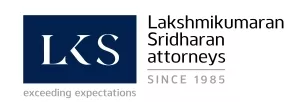Introduction
Myriad parameters and considerations influence the calculation of damages in Intellectual Property Rights disputes. The general perception of damages in IPR matters is that they serve as a means for restitution, i.e., to remit any unjust gains of infringement back to the Plaintiff. However, damages also serve a punitive end. They act as a deterrent for third parties looking to engage in questionable conduct that is violative of IPRs. Therefore, the nature and quantum of damages in India are determined on a case-by-case basis. Recently, Indian Courts have taken a proactive stance towards awarding increasing sums of damages for infringement in IPR matters. As recent as in March of this year, the Delhi High Court awarded Ericsson damages worth INR 2.44 billion in a Standard Essential Patent (SEP) infringement suit.1 This is the largest quantum of damages awarded in a patent infringement suit in India.
An emerging trend
The ruling in Ericsson (supra), although landmark, is part of a recent trend of Indian Courts providing monetary compensation in IPR matters. However, to balance competing goals of compensation, justice and uniformity, Courts have laid down several parameters which are to be considered while calculating damages. These considerations were consolidated by the Delhi High Court in 2019 in Koninlijke Philips N.V. and Another v. Amazestore and Ors.2 The Court in that case awarded damages to the tune of INR 31.5 million for infringement of the Plaintiff's patent. However, it is pertinent to note that the Court's decision recognized that such damages are not intended for cases involving first-time infringers. To ensure that a judicious approach is taken to arrive at a figure for damages, the Court consolidated the discussion on calculation of damages and devised the following formula:
|
Degree of mala fide conduct |
Proportionate award |
|
First-time innocent infringer |
Injunction |
|
First-time knowing infringer |
Injunction + Partial Costs |
|
Repeated knowing infringer which causes minor impact to the Plaintiff |
Injunction + Costs + Partial damages |
|
Repeated knowing infringer which causes major impact to the Plaintiff |
Injunction + Costs + Compensatory damages |
|
Infringement which was deliberate and calculated (gangster/scam/mafia) + willful contempt of court |
Injunction + Costs + Aggravated damages (Compensatory + Additional damages) |
Thereafter, the Delhi High Court issued the Intellectual Property Division Rules3 in 2022, to provide a comprehensive set of guidelines specific to IPR matters being litigated before the Delhi High Court. These Rules were a first in India and have set the ball rolling for an IP-Division in the Madras High Court and possibly one in the Calcutta High Court, in the near future. Amongst other aspects, the Rules address the issue of computation of damages. Rule 20 enlists the following 6 factors to determine the quantum of damages:
- Lost profits suffered by the injured party;
- Profits earned by the infringing party;
- Quantum of income which the injured party may have earned through royalties/license fees, had the use of the subject IPR been duly authorized;
- The duration of the infringement;
- Degree of intention/neglect underlying the infringement;
- Conduct of the infringing party to mitigate the damages incurred by the injured party.
In Strix Ltd. v. Maharaja Appliances Ltd.4 the Delhi High Court awarded damages worth INR 8.1 million. In this case, the Defendant abandoned the litigation midway, thereby blinding the Court to the actual unjust profits gained by the Defendant. To overcome this hurdle, the Court relied on the material and evidence placed on record, which included the press clippings of the Defendant disclosing their annual turnover and product prices from invoices of the Defendant as submitted by the Plaintiff. Through this material, the Court estimated that the Defendant must have generated a profit worth INR 9.6 million through the sale of the infringing products. Accordingly, the Court determined damages to the tune of INR 5 million and added litigation costs of INR 3.1 million, which cumulatively added to INR 8.1 million. The Court in this case noted that damages are of three kinds i.e., notional damages, compensatory damages, and punitive damages. The Court held that in a case where the evidence is not led, the damages have to be notional and are to be considered on a reasonable/fair basis. In such a case, the Court can only make a broad assessment of profits, on the basis of the evidence on record.
Relevance of market share and lost profits
Recently, the Delhi High Court awarded USD 2,60,45,250 as damages to the plaintiff in Communication Components Antenna Inc. v. Mobi Antenna Technologies (Shenzhen) Co. Ltd. & Ors.5 The Plaintiff filed a suit for infringement against the Defendants, claiming violation of their rights in Patent for an invention titled 'Asymmetrical Beams for Spectrum Efficiency'. Essentially, the invention comprised of a fixed beam split-sector antenna. The Plaintiff sought delivery up and rendition of accounts, along with an injunction to restrain the Defendants from exploiting their invention. The Defendants challenged the validity of the suit patent by way of a counterclaim.
At the outset, the Court dismissed the challenge to the validity of the suit patent, recognizing the novelty of the same. Relying on witness testimony and technical analysis, the Court concluded that the features of the suit patent were present and thus, infringed, by the Defendant's products.
On the aspect of damages, it was noted by the Court that a Plaintiff can be compensated by (a) rendition of accounts; or (b) compensatory damages for lost profits; or (c) reasonable royalty. Since the Plaintiff did not assert claims for rendition of accounts, the Court observed that sales by the Defendants during 2011 and 2014 could be a measure of damage caused to the Plaintiff and on this basis, royalty can be calculated. The Court also noted that the Defendants were previously directed to file the sales figures pertaining to sales of the impugned products, and that the affidavits filed in this regard, strangely showed 'Nil' sales for the said period of 2011-2014.
The Court therefore proceeded to analyze calculation of loss of profits for compensatory damages based on the evidence led by the expert witnesses of the Plaintiff. The witness provided to the Court a Total Addressable Market ('TAM') Analysis, 2011, which was originally intended to inform the Plaintiff's board of directors and investors of quantitative details regarding the suit patent's commercial use in India.
The quantification of damages was made keeping in mind the following factors:- a) market size lost by the Plaintiff in India; b) retail price of antennas covered by the suit patent in India from 2007 to 2011; c) retail price of antennas covered by the suit patent in Canada and USA in 2011; d) retail price of the most basic model of antennas covered by the suit patent in Canada and USA post-2012; and e) cost price to manufacture antennas covered by the suit patent in India and North America.
Based on the above-mentioned factors, the Court noted that the Plaintiff would have lost a market size of 94,710 antenna units between 2011 to 20146. Further, the per-unit profit received on the sale of the invented product was computed as USD 5507. The Court noted that the figure of 94,710 cannot be accepted in the absence of any evidence on the actual lost market share and that it cannot be concluded with certainty that the entire market share would have come to the kitty of the Plaintiff. Therefore, the reasonable estimate of the lost market share, as per the Court, considering that Plaintiff is a patent holder and based on the number of base transceiver stations/ tower sites that may have been available in the Indian market, was assessed as half of 94,710 units, i.e., 47,335. Accordingly, damages were computed to be USD 2,60,45,250 (INR 2,17,47,78,375 at the current US Dollar rate of INR 83.5)8 for the period of 2011-2014. The Court denied the Plaintiff's prayer for punitive damages. Relying on Strix Ltd. (supra), the Court reiterated that punitive damages are awarded only when compensatory damages were inadequate.
Significance and impact
A survey of the above decisions indicates that in so far as uncontested matters are concerned, the computation of damages is on a subjective basis. While Courts have held that in such cases, damages are to be considered on a reasonable/fair basis and that the Court can only make a broad assessment of profits, basis the evidence on record; it remains to be seen how Courts will make such assessments and on what factors/parameters. For instance, would it be correct to take the lesser of two options in any given scenario or should the Courts seek the aid of an independent expert assessment and not merely rely on the Plaintiff's evidence, especially when the assessment being undertaken is not on actuals. In any case, it is evident that Courts are now viewing the aspect of damages from different vantage points.
Footnotes
1 Lava International Ltd. v. Telefonaktiebolaget LM Ericsson, 2024 SCC Online Del 2497.
2 2019 SCC Online Del 8198
3 https://www.wipo.int/wipolex/en/legislation/details/21496
4 2023 SCC Online Del 7128
5 CS(COMM) 977 of 2016, Delhi High Court
6 A figure of 21,293 was taken as the market size lost at the end of 2011 and for the years 2012 to 2014, the market size lost was taken as 73,417.
7 Plaintiff placed on record Purchase Orders reflecting the retail prices and average of the antennas sold in USA was assessed as USD 1,350. The average cost price was shown as USD 800 and therefore, the profit was assessed as USD 550 per unit.
8 47,335 units multiplied by USD 550 amounted to USD 2,60,45,250.
The content of this article is intended to provide a general guide to the subject matter. Specialist advice should be sought about your specific circumstances.



